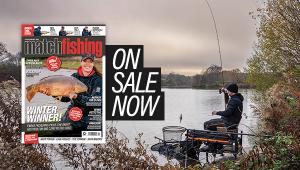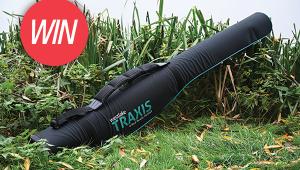Method Feeder Tactics - Chris Cameron
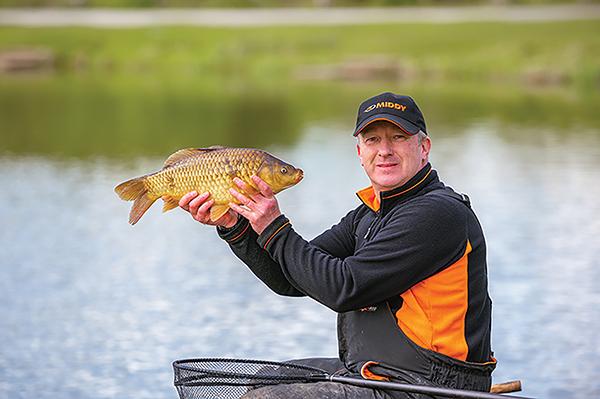
Middy’s Chris Cameron knows a thing or two when it comes to Method feeder fishing, so we asked him to part with some of his knowledge to help you keep catching when the fish are fickle and tricky to catch.
Method feeder fishing… load the feeder with groundbait or pellets, stick your hook bait on top and then cover it with more bait before casting it out. What could be more simple?
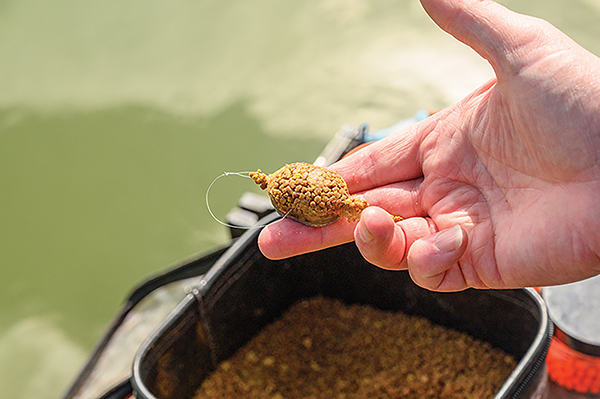
Method feeder fishing is very simple in its basic form, and of course you will catch plenty of fish when they’re feeding well, but to take your Method feeder fishing to the next level you need to be more willing to change your go-to winning formula and look out for signs in your swim that fickle fish are wanting something different.
Too Easy?
The thing with commercial fisheries is that a lot of us think they’re easy because for much of the year they can be and that lulls you into a false sense of security.
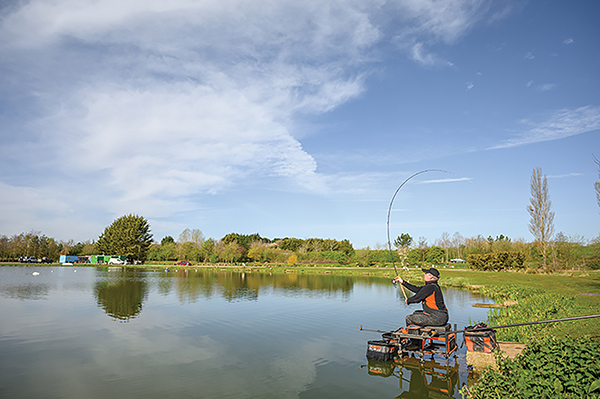
You chuck the Method feeder out and you expect the tip to go round, it’s as easy as that and because of the combination of a deadly tactic and prolific commercial fisheries that can be true, especially during the warmer months. But to get your tip going round with more regularity, especially at this very changeable and tricky time of year, you need to be willing to change what you feed, what you use on the hook and where you cast.
Today I’m on the Island Pool at the excellent Manor Farm Leisure near Evesham and it’s a venue I’ve fished quite a lot over the years, but not so much recently. However, being only 40 minutes from home, it’s the venue I tend to come to when I need to catch some fish in between fishing qualifers for big-money matches, which can be tough and sometimes you need to have a good bagging session to get the confidence and enthusiasm up again! This is also a great place to come to try new baits and gear because I don’t want to be using anything for the first time during a match.
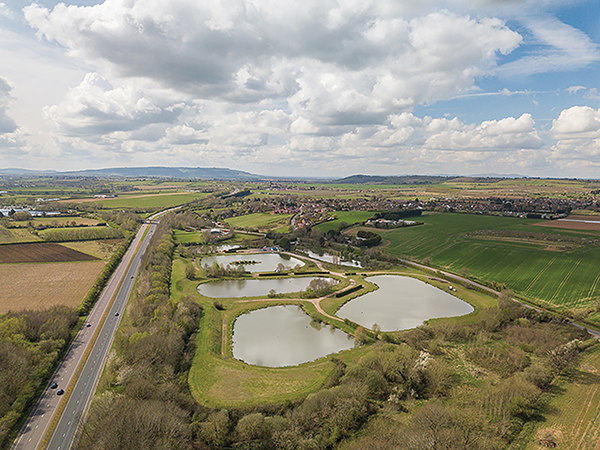
Find A Feature
The obvious feature to cast to on this lake is the island margin and you can reach it from any peg, although some pegs will have to longer chuck than others. In my swim today, I can reach the island comfortably and the range is around 40 metres, so getting the distance won’t be a problem.
Accuracy is so important for this style of fishing as I’m sure you all know, and anglers that can land the feeder in the same spot every time will generally catch more fish on this type of venue compared to those who are less accurate.
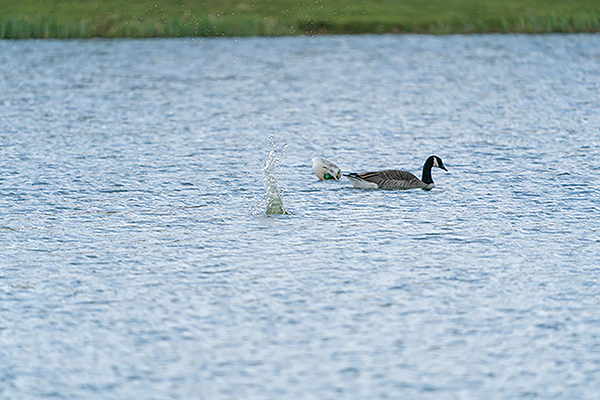
As well as accuracy, distance is just as important on this lake because the shelf across to the island drops off quite quickly in deeper water. The sun’s out today and those fish will prefer to be in the shallower water close to the island so it’s crucial you keep hitting the clip and then follow the feeder down once it has so the feeder doesn’t ping back towards you. If you get it wrong don’t be afraid to wind it straight back in and have another go.
However, although the island is an obvious spot to cast to, I’m expecting the fishing to be tricky so I’ve got another line at the same distance, but out in the open water to my right, as a back-up. Feeder fishing is no different to pole fishing and rotating and resting swims is all part of a successful approach.
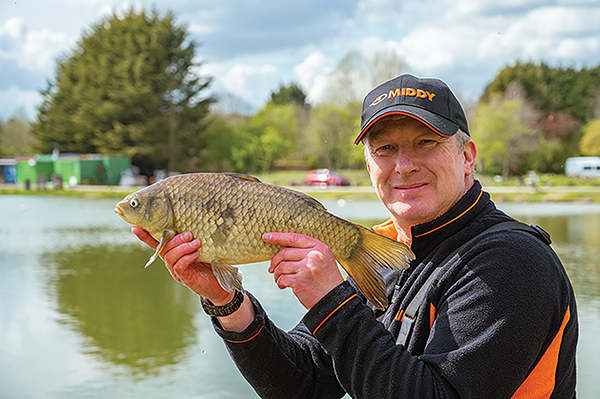
I’m also going to loose feed a swim with 6mm pellets around halfway across to the island and this will be another line I can try and hopefully catch a few fish from while my line across to the island is rested. In a non-feeder only match this could be a long pole line, or a pellet waggler line, and you can catch big weights on this venue by pinging pellets and fishing shallow.
However, I’m just fishing the feeder today and by having those three lines in different depths of the swim, I should be able to find the fish if they’re feeding at a certain depth.
Get A Grip
F1s and carp are the main target on this lake but there are plenty of skimmers too and this is typical of many commercials up and down the country. Quite a few of the carp and F1s are old, wary fish so presentation has to be spot on to catch them.
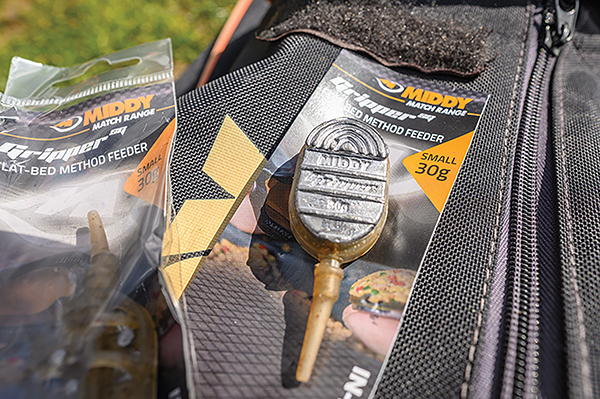
The biggest problem when fishing tight to the island is keeping the feeder on top of the shelf so it doesn’t drag back down and into the deeper water. I use the Middy Gripper Method feeders for this because they have a small ridge built into the lead, which helps to anchor the feeder on the bottom so it’s less likely to be dislodged and go down the slope.
I’m only using the small size today with 30g of lead in the base because the fishing everywhere is a bit iffy at the time of writing and the fish definitely don’t want much grub. Although it looks nice and warm in the photos, the nights are still very much on the chilly side!
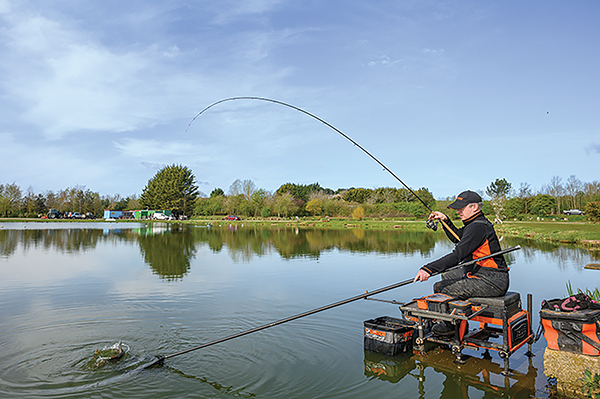
The Killer Ratio
Bait-wise I’ve got some groundbait and micros on my side tray as well a good selection of wafters for the hook and those 6mm hard pellets for loose feeding. I always start the session or match by feeding 50/50 micros and groundbait on the feeder and then look to see what response I get and it’s not very often that I won’t adjust this several times during a match.
The area I’m casting to around the point of the island always holds a few carp so it makes sense to fish mainly micros with catching those very much in mind, as the pellets hold bigger fish in the swim. You also tend to get bites quicker when using micros for that very reason.
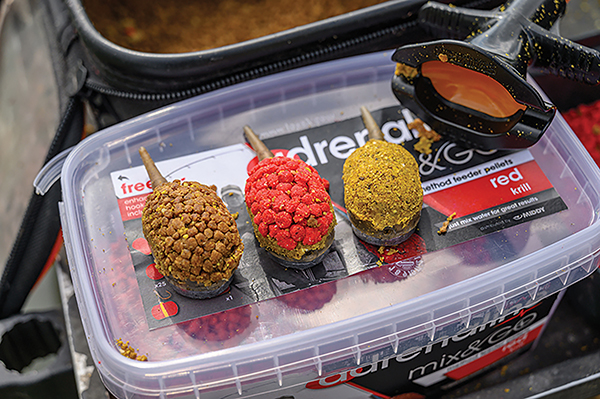
If the big fish are feeding and wanting plenty of grub then I’ll generally stick with mainly micros, but the basic rule I use is to add more groundbait the harder the fishing is.
If it’s very hard, like it often is during the winter, or the bigger fish aren’t feeding but smaller fish like skimmers are, I’ll only have groundbait with maybe the odd micro on the feeder. If I’m catching F1s, carp and skimmers but it’s by no means solid, I might use 50/50 or it could be anything in between neat groundbait or neat micros depending on how the fish are feeding and the size of fish I’m catching.
That’s what I really love about fishing the Method. There are so many ratios of pellets to groundbait you can try, as well as double skinning pellets with groundbait on top or double skinning groundbait with pellets on top, the permutations are endless and working hard and experimenting is often the key to keeping bites coming and catching at a steady rate. Fish will often wise up to one type of presentation so offering something different can fool them into taking your bait.

Range Of Wafters
For hook baits I’ve got wafters ranging from 5mm up to 8mm and I carry them in various colours so I can try different things when the swim is quiet. I know many top anglers have a favourite colour when it comes to wafters and that’s what they stick with because it gives them confidence, and I would say my favourite colour is pink but only because that’s what I tend to put on the hook more.
However, I will try other colours and more importantly in my opinion, I’ll try different sizes as well throughout the session. For example, if I’m catching carp an 8mm would be first choice but if the fishing’s hard and I’m mainly catching skimmers because the F1s and carp aren’t really feeding, a 5mm would be a better selection.
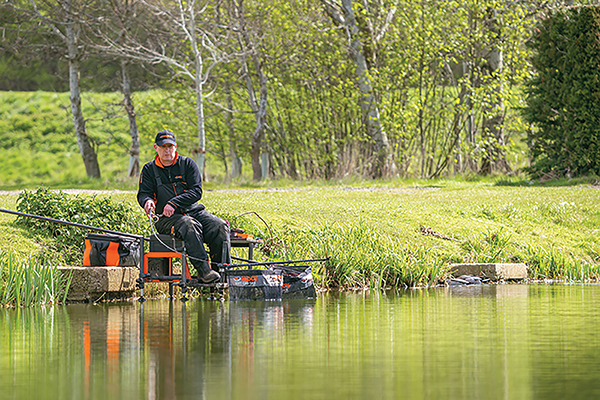
Whether colours work to the degree many anglers think they do, I don’t know! What I do know though, is that a carp’s eyes point upwards and the mouth points down, so can they really see straight down to pick out a certain colour of bait that stands out from the colour of the bait you’re feeding?
They’re more likely to just be sucking the bait in and then getting hooked when they suck in the neutrally buoyant hook bait, whatever the colour. That’s my theory anyway!
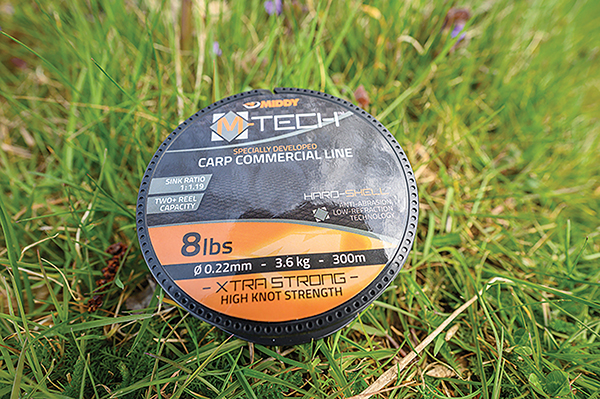
Tackle-wise, my go-to setup for this type of venue is an 11ft Quartix feeder with the 1oz tip and a 4000 size reel loaded with 8lb M-Tech line. As I mentioned previously, the feeder is a small 30g Middy Gripper Method that I fish inline rather than elasticated, and on the end I’ve got a pre-tied 4in hooklength of 0.22mm line to a size 12 QC-1 hook with a hair rigged bait band. I’ll vary the size of the hook though, from a size 16 to a 12 depending on the size of my wafter.
The Session
Considering the weather we’ve had over the last couple of weeks, it’s fished pretty much as I expected today – hard! At the beginning of the session I was getting liners, indicating that fish were in the peg, but it was very tricky to get bites. My first fish was an F1 on a 6mm wafter but all I could catch was the odd skimmer on a 5mm wafter and that set the pattern for the day really. Changing the size of the hook bait has worked too and I had my best spell of the session when every time I changed this, I caught a fish!
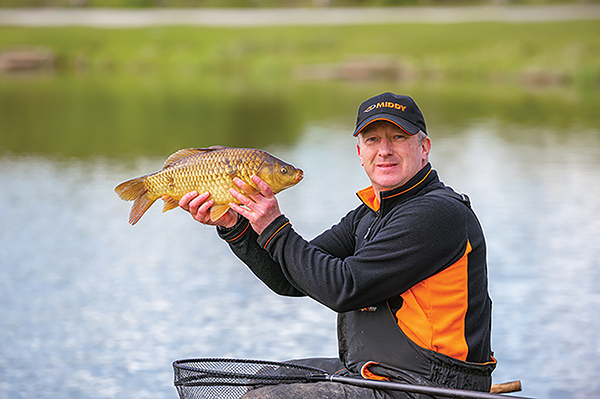
What has been very noticeable is the absence of carp that haven’t fed at all today which is unusual. The cameraman was at the prolific Larford Lakes the day before this feature and the carp never fed there either, which is also very unusual and proof of how fickle they can be in the spring.
The swim next to the island has been the best, although I did catch some fish from the open water to my right but nothing on the line where I had been loose feeding pellets.
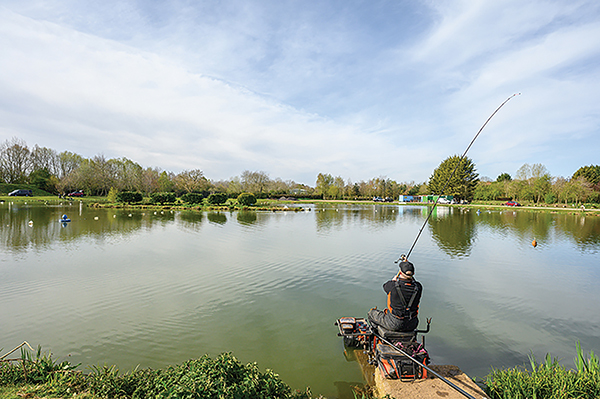
I’ve also tried various ways of loading the feeder with multiple pellet to groundbait ratios and also double skinning with either pellets or groundbait, but the best combination today because of how the fish were feeding has definitely been mostly groundbait with a few micros. It has been tough, but by offering the fish something different on most casts in the form of either a hook bait change or a change to the bait I’m putting on the feeder, I’ve managed to keep fish coming.

Alternating lines has also helped when I felt the main swim needed a rest and I’ve ended the session with a very hard-earned 50lb of F1s and a few skimmers.
I think the variations you can employ in your Method feeder fishing these days are considerable and it’s really developed over the last two or three years. Even on matches where any tactic can be used, the Method is becoming the number one choice for many anglers. You can even fish it on a pole line or in the margins and on some days it can be better than the pole.
When you think about it, 95 per cent of the bites you get on a Method feeder result in a hooked fish, so if you’re getting liners and silly bites on the pole, try dropping a Method feeder over the top.
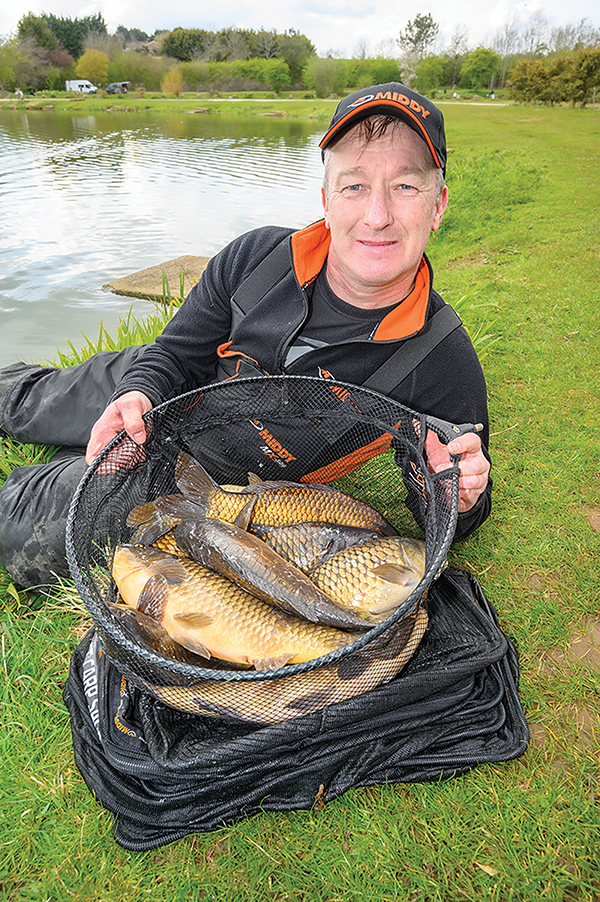
- Log in or register to post comments






